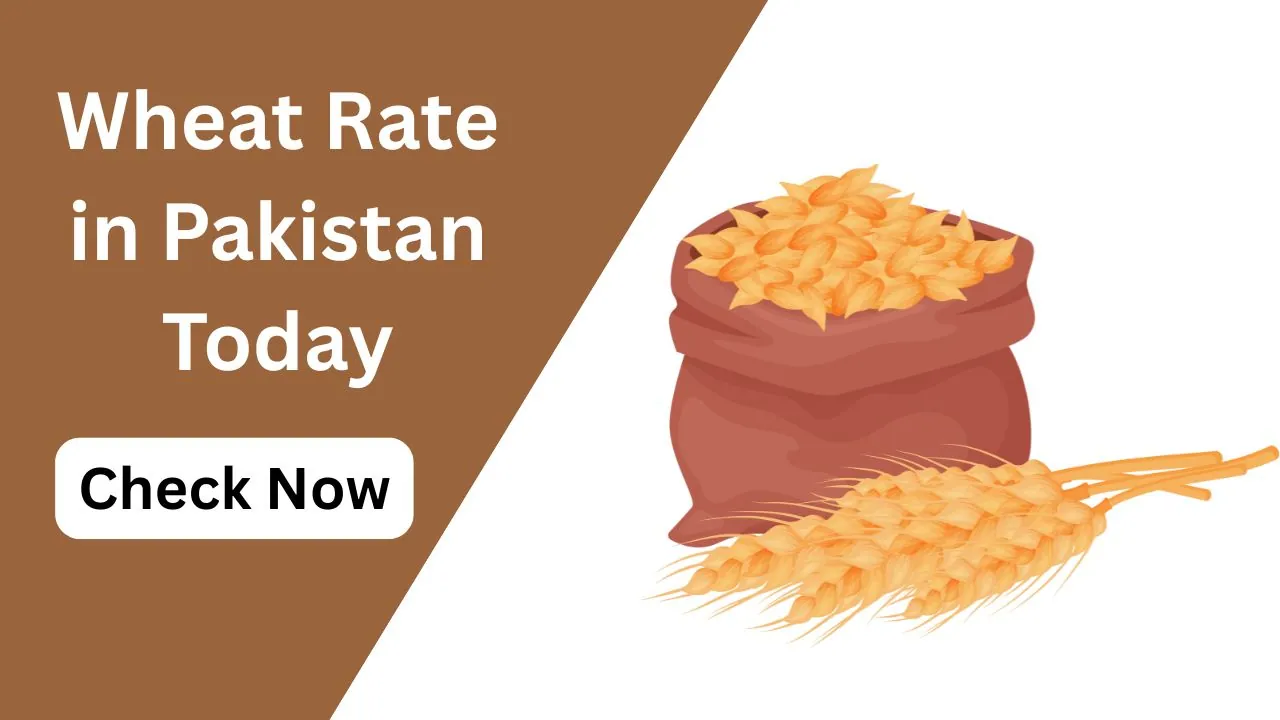Gandam Rate in Pakistan Today 04 June 2025 market rate in Pakistan stays within Rs. 2,000 to Rs. 2,200 per 40kg across various locations and market conditions. The prices of wheat gandam matter to all sectors in Pakistan including farmers who grow it and millers who process it and consumers who buy it.
🌾 Wheat Prices in Major Cities of Punjab – 4 June 2025
Gandam Rate in Pakistan Today Here’s a table showing the latest gandam rates in major cities of Pakistan today:
WhatsApp Channel
Join Now
City |
Minimum Price (PKR per 40kg) |
Maximum Price (PKR per 40kg) |
|---|---|---|
Lahore |
Rs. 2,620 |
Rs. 2,850 |
Faisalabad |
Rs. 2,640 |
Rs. 2,840 |
Rawalpindi |
Rs. 2,680 |
Rs. 2,900 |
Sialkot |
Rs. 2,660 |
Rs. 2,870 |
Hafizabad |
Rs. 2,630 |
Rs. 2,850 |
Multan |
Rs. 2,600 |
Rs. 2,880 |
Dera Ghazi Khan |
Rs. 2,610 |
Rs. 2,820 |
Alipur |
Rs. 2,630 |
Rs. 2,840 |
Arifwala |
Rs. 2,650 |
Rs. 2,890 |
Nankana Sahib |
Rs. 2,600 |
Rs. 2,810 |
This year, the Punjab government has adopted an open market rate policy instead of fixing support prices and government procurement of wheat. The recent wheat market policy changes have resulted in shifting wheat prices between various cities throughout Pakistan.
🌾 Wheat Prices in Sindh (per 40 kg)
District/City |
Minimum Rate (PKR) |
Maximum Rate (PKR) |
|---|---|---|
Hyderabad |
2,370 |
2,460 |
Karachi |
2,340 |
2,460 |
Mehrabpur |
2,400 |
2,460 |
Sanghar |
2,350 |
2,460 |
Shahdadpur |
2,340 |
2,460 |
Tando Muhammad Khan |
2,360 |
2,460 |
Sukkur |
2,370 |
2,450 |
Jhuddo |
2,400 |
2,450 |
Mirpur Khas |
2,370 |
2,440 |
Tando Allah Yar |
2,360 |
2,440 |
Umarkot |
2,350 |
2,440 |
Ghotki |
2,380 |
2,430 |
Kunri |
2,380 |
2,430 |
Sakrand |
2,330 |
2,430 |
Nawabshah |
2,390 |
2,420 |
Larkana |
2,350 |
2,420 |
Dadu |
2,350 |
2,400 |
Shikarpur |
2,340 |
2,400 |
🌾 Transition to Open Market Policy
In 2025, the Punjab government ceased setting a minimum support price (MSP) and discontinued direct wheat procurement from farmers. This policy change aligns with conditions set by the International Monetary Fund (IMF) aimed at reducing fiscal deficits and limiting subsidies.
Also Read: AGS Battery Price in Pakistan
Conclusion
The Gandam Rate in Pakistan Today demonstrates modern market changes that result from the Punjab government’s new open market policy. The current wheat market observes prices between Rs. 2,000 and Rs. 2,200 per 40kg resulting in market scrutiny across the supply chain from farm to mill and consumer dining tables. Change in this system grants market authority although producers and buyers must actively monitor and apply smart decision-making practices.

